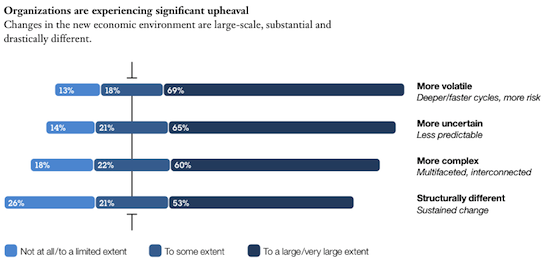This post is part of my paper ‘The Evolving Role of Creativity in Brand Management’. You can see the other posts and the table of contents here.
“Brands are made, not born. The process of their construction is complex. From a manufacturer’s point of view there is a reduced form, “stimulus-response” style simplicity to it:
(1) the manufacturer takes actions (e.g., the marketing mix) and that leads to
(2) customer mental responses towards the brand (perceptions, beliefs, attitudes, and so on). These perceptions (and the resulting willingness to pay) in turn lead to
(3) customer behavior in the product market (e.g., sales), which in turn generates
(4) financial value in general and stock market and market capitalization in particular.
This framework or value chain is a useful basic conceptualization. Still, it obscures some important complexities.” (Keller & Lehmann 2006, p.752)
As the review of contemporary challenges for brand management tried to argue, predominant brand management practice does not reflect on environmental complexity. What most concepts, models and recipes still have in common is that they use a more or less simplistic perspective on the management of systems (Tropp 2004, p.130). They perceive brands as ‘trivial machines’. This means that by giving an order in the form of information, a system will react in a way so that certain goals will be reached. Metaphorically, managers thus become engineers, dealing with the control of a closed system, simply adjusting the given input based on feedback from the system and thus reaching their objectives.
This perspective promotes a “primacy of planning” (Tropp 2004, p.132) and puts analysis and strategy at the beginning of a linear and controllable process. Management theory, from this perspective, believes that brands can be easily manipulated by using the right levers, following a linear path that leads to guaranteed success if only the instructions are followed carefully. This perspective on brand management may be understood as “brand engineering” and is visible in such words as the German “Markentechnik” that brings with it an almost almighty claim to brand building success.
If, however, as argued before, the multidimensional knowledge about brands is shaped by the experiences and social interactions of consumers and if this happens in an increasingly unpredictable landscape, then brand management is ill-advised to adhere to this perspective.
With a failure rate at the introduction of new brands of between 50 and 95% (Buchholz & Wördemann 1998, p.20 qtd. in Tropp 2004, p.144) and in light of the over-boarding complexity of companies’ environments, the empirical regularity today is closer to failure (Ehrenberg 2002; Ehrenberg 2001) than success. This, in turn, raises doubts if these failures are a consequence of not obeying to the how-to’s of positioning, branding or even advertising execution or if it is the underlying paradigm of a linear and logically deductible outcome and “how-to” literature that might be flawed (Tropp 2004, p.144).
—
Buchholz, A. & Wördemann, W., 1998. Was Siegermarken anders machen, Econ.
Ehrenberg, A., 2001. Marketing: Romantic or Realistic? Marketing Research, 13(2), pp.40–42.
Ehrenberg, A., 2002. Marketing: Are you really a realist? strategy + business, 27(Second Quarter 2002), pp.22–25.
Keller, K.L. & Lehmann, D.R., 2006. Brands and branding: Research findings and future priorities. Marketing Science, 25(6), p.740.
Tropp, J., 2004. Markenmanagement: Der Brand Management Navigator. Markenführung im Kommunikationszeitalter, VS Verlag.


